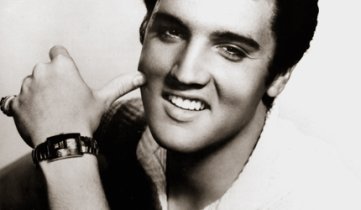
His dance was athletic but classical. He was energetic and handsome, and his style as a solo performer uniquely drew in his audience… We’re talking about Gene Kelly, one of the best known icons of the 1940s and 50s.
Born on August 23, 1912 in Pittsburgh, PA, Kelly was an American film actor and director whose dynamic style combined with classical ballet technique to transform the movie musical. He boldly blended solo dancing, mass movement and offbeat camera angles to tell a story in purely visual terms. Though Kelly struggled early on in his career to establish himself as a star, his first career breakthrough came in 1939 when he danced his own choreography on Broadway in “The Time of Your Life.”
It was in 1952, accompanied only by an umbrella, that Kelly created one of the most joyous dances ever filmed. Do you know which movie I’m talking about? That’s right, it was Kelly’s song and dance performance in “Singin’ in the Rain” that solidified his icon status.
While he often was compared to other famous film dancers, Gene Kelly had his own unique style. Kelly dominated the Hollywood scene by bringing energy and athleticism to his dancing. Both his good looks and the likeable characters that he portrayed on the big screen set him apart, earning him recognition as one of the greatest musical film stars in history.
He brought dancing into real life settings in his movies, performing largely in regular clothes and in common places. Some of his most famous performances aside from “Singin’ in the Rain” were “Anchors Away” in 1945 and “An American in Paris” in 1951. Though his style of dance and musical film faded in popularity in the later 1950s, he is still acknowledged to be one of the most innovative Hollywood performers with a lifetime of great achievements.
Off screen, Kelly raised some eyebrows with his political views. During his marriage to the actress Betsy Blair, the couple became well known for their somewhat radical liberal politics. Kelly was a lifelong supporter of the Democratic Party, and in 1947, he was part of the Committee for the First Amendment. This Hollywood delegation flew to Washington to protest at the first official hearings by the House Committee on Un-American Activities. Around the same time, his first wife Betsy Blair, came under scrutiny as a possible Communist sympathizer.
Kelly and Blair would later divorce in 1957, after which his political life quieted while his life as a stage-icon continued to capture the attention of the country. He married Jeanne Coyne who he remained married to until she passed away in 1973. Kelly eventually wed his third wife, Patricia Ward, in 1990, and lived the rest of his years by her side. He died on February 2, 1996, at his home in Beverly Hills, California.
Many Hollywood stars mourned his passing, including his “Singin’ in the Rain” co-star, Debbie Reynolds. “There’ll never be another Gene,” she told the press. “I was only 18 when we made that movie, and the hardest thing was keeping up with his energy.” In July 2012, New York City’s Film Society of Lincoln Center hosted a month-long program in honor of Kelly, showing nearly two dozen of Kelly’s films.
The legacy he left behind can only be described as simple, Gene Kelly. His performances on stage and film continue to inspire and bring joy to audiences, while his work ethic remains something to aspire to for other performers.
We’ll leave you with famous words that Gene Kelly used to sum up his approach to dance. “I don’t believe in conformity to any school of dancing. I create what the drama and the music demand. While I am a hundred percent for ballet technique, I use only what I can adapt to my own use. I never let technique get in the way of mood or continuity.”
What is your favorite Gene Kelly dance scene or film?

